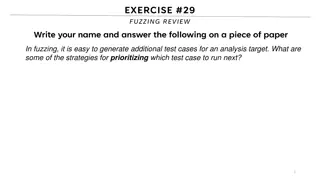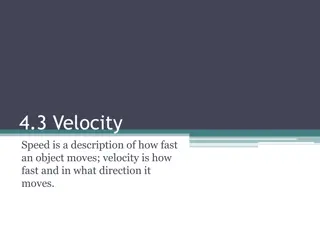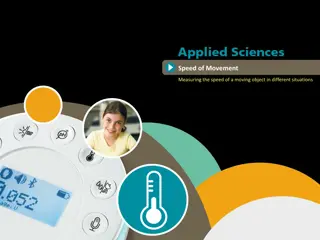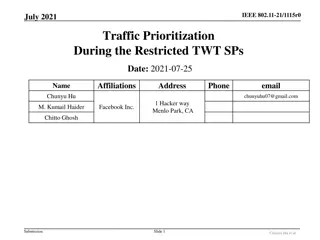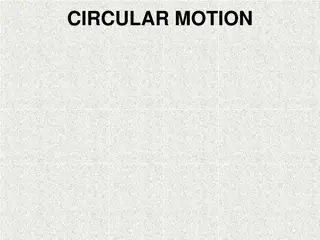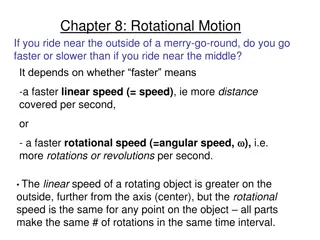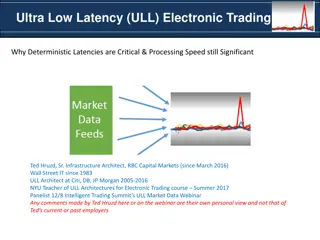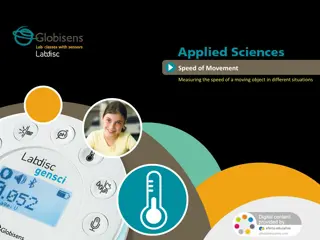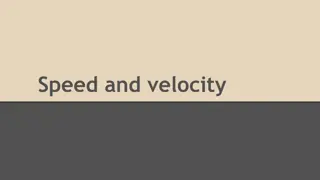
Mastering Time Management for Success and Efficiency
Explore key aspects of time management, including the impact of disorganization, the 80/20 rule, and tools for measuring and improving time management skills to enhance productivity and decision-making in various settings.
Download Presentation

Please find below an Image/Link to download the presentation.
The content on the website is provided AS IS for your information and personal use only. It may not be sold, licensed, or shared on other websites without obtaining consent from the author. If you encounter any issues during the download, it is possible that the publisher has removed the file from their server.
You are allowed to download the files provided on this website for personal or commercial use, subject to the condition that they are used lawfully. All files are the property of their respective owners.
The content on the website is provided AS IS for your information and personal use only. It may not be sold, licensed, or shared on other websites without obtaining consent from the author.
E N D
Presentation Transcript
Managing Managing Time For Speed Time For Speed and Prioritization and Prioritization Prof. Parul Rishi PhD (Psychology) Associate Profssor,Faculty of Human Resource Management Adjunct Professor-Management- University of Zululand, South Africa Expert Consultant - Environmental Psychology Aix Marseille University , France drparulrishi@gmail.com
Time vs. Success Being successful doesn t make you manage your time well. Managing your time well makes you successful. 2
The Problem The Problem of Managing Time of Managing Time By some estimates, people waste about 2 hours per day due to following: Messy desk and cluttered files Can t find things Un prepared, Try to do things which other people should do Tired/unable to concentrate 3
Major functions of Judiciary/ Administration Case Management Judicial Record Management Lok Adalat RTI Coordination among different courts Issuance of Cause List Index Delivery
Behavioural Profile Personality & Time Management
The 80/20 Rule The 80/20 Rule Good administration in judiciary system comes from time and experience And having the Art of identifying trivial vs critical case details and accordingly providing time. Critical witness/case details are few (20%) and the trivial distracting unnecessary details are many(80%). So time spent should be reverse ,i.e, 80% on 20% critical details and 20% on 80% trivial details . However, in practice, it is reverse. 6
From Reasonable Time to Optimal Time Frame Without any Undue Delay Time line of Judicial Proceedings CASES ARE MANAGED AND DISPOSED IN DUE TIME Without Compromising the Quality and Fairness of Judgment
Tools to Measure Time Management How Much Delay? Why Delay? Quantify Delays Whether causes unavoidable/ Avoidable? Causal Analysis of Delays Who is accountable for delay? Person- Lawyer/Witness/ Prosecutior/Judge/Adm Personnel/Police/etc. Situation Accountability for delay
How to Manage Time??? Time Time Planning Planning Timely Justice Time Frames for through
What is Time Frame??? Tools to achieve the timeliness of case processing. A condition to start measuring and comparing case processing delays - a difference between the actual situation and the expected timeframes implemented to reduce the lengths of case processing. Timeframes have to fit the contingencies of the local legal culture Having timeframes is a prerequisite for evaluating the results of the efforts made to improve the lengths of judicial proceedings.
Timeliness of Case Processing Setting realistic and measurable time frame for every case Enforcing Time Frame Monitoring Time Frame
How Time Framing Helps??? Time Framing goals should be shared and pursued by all though stakeholders participation To Help Build Environment for Development of Innovative Policies Help Build the culture of Shared responsibilities rather than blame game To Help Build Common Commitment among Key Players CONSIDERING THE LOCAL LEGAL CULTURE
Attributional Style Internal External
External LOC for Delay in case processing/Judgment Delivery Population So many cases per day Staff do not cooperate Outside pressures Legal system takes time , its ok System is like that Being Meticulous is an indicator of Quality
Internal LOC of Delay Inspite of all odds, I can still make a try to improve the system It is my responsibility to handle the staff in a way that delay can be avoided I must monitor stringently to avoid delay, at least on my part and facilitate others to speed up. People should not mock judiciary for delay.I must find some solution
Examples of Time Framing Across the world Finland- Optimum timeframes for each type of cases are agreed and Targets for case processing are set. Slovenia - court rules sets a timeframe of 18 months after the case has been presented before the court. If a decision is not taken within 18 months, the case is considered delayed. The head of court may ask the judge in charge of the case to report the circumstances why a decision has not been reached. Sweden targets for civil and criminal cases are set up by the Government. All units within the court define their targets
Setting of timeframes for kind of procedure Timeframes make more sense if they are set up allowing for the different kinds of procedure (civil, criminal, administrative, enforcement, etc.). Denmark 58% of the civil cases should be disposed within 1 year, 63% of the criminal cases should be disposed within 2 months and 95% within 6 months. Norway Timeframes are proposed by the Ministry of Justice with consent from the Norwegian Parliament. As of today, 100% of civil cases should be disposed in six months, 100% of criminal cases in three months.
Setting timeframes in collaboration with justice stakeholders The building and maintenance process of setting realistic timeframes must involve the stakeholders at the different levels (state, court, single unit). Setting timeframes is not a once for all event, but it has to be a continuous process built through consensus and shared objectives between the stakeholders.
Examples Finland there is a tailored program for each case and directions are given informing the parties about the estimated timeframe of the pre-trial phase, pre-trial hearings and trial. Detailed hearing timetables are sent beforehand to the parties. The lawyers and prosecutors are copied in for comments. Several discussions take place between the judges and the local lawyers in order to come up with common ideas and guidelines on how to improve the efficiency of justice including the length of procedure. Germany regular meetings with lawyers are organised to discuss customer satisfaction and problems with the service delivered by the court. Sweden timeframes for each civil case are setting up in cooperation with the users.
Alexander says If there is a path ,I will find it. If there is no path, I will make it.
Live Above the LINE- Covey s Time Management Matrix Important Not important MANAGE Crisis Critical Pressing Cases Deadline driven Cases Meetings DO IT NOW AVOID Diverging papers/reports/witness Interruptions, Phone calls Media Interventions DELEGATE 1 2 Urgent FOCUS Complex Cases Having long term implications and can create precedence DECIDE WHEN TO DO LIMIT Time Wasters Disturbances Unwanted people Unrelated details to confuse DUMP 3 4 Not Urgent
Important Not important MANAGE AVOID Urgent DO IT NOW FOCUS DELEGATE LIMIT Not Urgent DUMP DECIDE WHEN TO DO
Priority Listing A B C of Time Management
How to Get IT Done 20 minutes at beginning of week Review your Roles o Sharpen the Saw Read and analyse before hand to save time Prioritize by Choosing Big Rocks first o Which is the most important case requiring maximum time and effort? Schedule the Week keeping in mind the reversal of 80/20 Rule
Get it All Done Peter Drucker says: Work where you are the strongest 80% time Work where you are learning 15 % time Work where you are the weakest 5% time
Scheduling Yourself Scheduling Yourself You don t find time for important things, you make it Everything you do is an opportunity cost Learn to say No 27
PD Time Precious Time Dead Time
Cutting Things Short Cutting Things Short I m in the middle of something now Start with I only have 5 minutes you can always extend this Stand up, stroll to the door, complement, thank, shake hands Clock-watching; on wall behind them 29
Using Time Journal Data Using Time Journal Data What am I doing that doesn t really need to be done? What am I doing that could be done by someone else? What am I doing that could be done more efficiently? What do I do that wastes others time? 30
Delegation Delegation No one is an island You can accomplish a lot more with help Most delegation in your life is from faculty to graduate student 31
Procrastination Procrastination Procrastination is the thief of time Edward Young Night Thoughts, 1742 33
Avoiding Procrastination Avoiding Procrastination Doing things at the last minute is much more expensive than just before the last minute Deadlines are really important: establish them yourself! 34
Balancing Act Balancing Act Work expands so as to fill the time available for its completion Parkinson s Law Cyril Parkinson, 1957 35
Is The Jar Full? Stephen Covey in his book, First Things First, shares the following story "How many of these rocks do you think we can get in the jar?" he asked.
After many guesses, he said, "Okay, Let's find out." He set one rock in the jar . . . then another . . . then another. I don't remember how many he got in, but he got the jar full. Then he asked, "Is this jar full?" Everyone looked at the rocks and said, "Yes."
Then he said, "Ahhh" He reached under the table and pulled out a bucket of gravel. Then he dumped some gravel in and shook the jar and the gravel went in all the little spaces left by the big rocks. Then he grinned and said once more, "Is the jar full?"
"Probably not, He reached under the table and brought out a bucket of sand. He started dumping the sand in and it went into all of the little spaces left by the rocks and the gravel. Once more he looked and said, "Is this jar full?" "No!" we roared.
He said, "Good!" and he grabbed a pitcher of water and began to pour it in. " Well, what's the point?" Somebody said, "Well, there are gaps, and if you work really hard you can always fit some more things into your life."
"No," he said, "that's not really the point. The point is this: Put the Big Rocks in First
Thank you Have a Relaxed Time Today & For Ever! Dr.Parul Rishi/NJA-TM/IIFM 43

